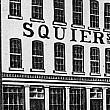
A History of Opera in Grand Rapids
by Gilbert R. Davis
published: June 22nd, 2007
Exactly one hundred years after the beginning of opera in Grand Rapids, it returned to the city for good in 1968 when the Opera Company of Western Michigan (as Opera Grand Rapids was first known) produced The Marriage of Figaro, the city’s first fully staged Mozart opera. Originally the work of talented local amateurs, we can be thankful that for almost forty years Opera Grand Rapids has presented us with outstanding productions, with ever-increasing skill and achievement. (Find more information to your right in Related Items)
Opera in Grand Rapids began on a Tuesday evening, September 15, 1868, in Squier's Opera Hall, where the Grau Opera Company presented Flotow's Martha, complete with orchestra and chorus. The editor of The Eagle wrote, "The evening was an outstanding success, the opera admirably presented to a full, appreciative and delighted audience," and the Grau Company--no less delighted--responded with a matinee encore of Auber's Fra Diavalo. Though neither of these Victorian favorites is much seen these days, opera took root in Grand Rapids, producing results both curious and exciting. Several years later, Professor Jaroslav Zielinski, a Polish emigre temporarily settled here, returned locally produced opera to Grand Rapids. Zielinski, whose excellent musical training and artistic tastes are evident in the reputation he enjoyed while living here, twice directed local amateurs in ambitious undertakings: the future of locally-produced opera looked bright. But Zielinski's decision to go West ended all that.
This brief flirtation with local opera was the beginning of a decade in which opera came to Grand Rapids in a big way. During the 1880s all the major impresarios brought their troupes to town to perform in the Powers Opera House. With them came opera light and heavy, sung by the competent and incompetent alike. Among the best known operas seen were Gounod's Faust, Verdi's La Traviata, Il Trovatore, and Un Ballo in Mascher--which was actually the first Verdi opera heard in Grand Rapids. In addition, the companies brought assorted operettas to lighten the season. And, of course, the Gilbert and Sullivan fever of the 1880s did not spare Grand Rapids. The performers who trouped through town during this busy decade make up a long list of the forgettable; but there were some memorable stars as well. Miss Minnie Hauk brought Grand Rapids its first Carmen, her most celebrated role, but press accounts of the evening read more like a social than musical event. The Penn Club, site of the after-theater party, was packed with everyone of standing in 1883 Grand Rapids society. All were anxious to meet not only the celebrated Miss Hauk, but also her husband, the Baron von Hesse-Wartegg, an Austrian nobleman of international fame.
But it was the Mid-West's own Emma Abbott who sparked the most enthusiasm during her six seasons here. Her Grand Opera Company introduced local audiences to Donizetti's two ill-fated mad women, Lucia di Lammermoor and Linda of Chamounix, as well as Verdi's Violetta, a role she was reluctant to sing because, she feared, "it would glorify fallen women." Miss Abbott starred in most of her Company's productions, but even on her nights off she appeared at intermission to enthrall everyone with her "Last Rose of Summer," "Swanee River," and "Home Sweet Home." She was America's favorite songbird and her Company always packed the Powers Opera House.
In 1916, overflow audiences greeted the Boston Grand Opera Company's La Boheme, starring the Met's own Maggie Teyte. The second half of this curious program featured Anna Pavlova and her Imperial Ballet Russe. An evening of a full-length opera followed by a complete ballet seems strange to modern audiences, but such mixed productions were then not unusual at all. The following year, the Boston Company returned with two Met stars--Maggie Teyte and Riccardo Martin--in a Faust production that was, by all reports, magnificently sung. But a train accident cost the group its final act Walpurgis Night and both its music and ballet had to be abandoned. In addition, the mishap forced the company to use La Boheme sets for the Act III outdoor scenes. All this the audience took in good spirits, and the Grand Rapids Press critic pronounced the Faust "brilliantly presented."
Over the next decades, opera in Grand Rapids fell on hard times. Even the valiant efforts of an impressive list of local sponsors could not rescue opera for Grand Rapids during the twenties and early thirties. Clearly, the effects of motion pictures and the phonograph were being felt everywhere in the entertainment world. And though opera productions were scarce in these years, opera stars were not. Under the auspices of various groups--Mary Free Bed Guild, St. Cecilia Society, East Congregational Church, the Schubert Club--some of the world's most famous opera singers were brought to town including Lauritz Melchior. These glorious recitals packed the various auditoriums around town during the inter-war years.
The Regent Theater located on Crescent St. opened in 1923 and would have been one of the auditoriums around town where some of those "glorious recitals" would have taken place. Although it showed films from the time it opened, it also had a stage for performances. The Regent was one of the first-run movie houses in the downtown area along with the Keiths on Lyon which opened in 1914, the Majestic at Library and N. Division (current home of the Civic Theater), and later the Midtown at 123 Pearl (the original Powers Opera House). It was demolished in the 1970s to become a parking lot. The demolition of the Keiths and Regent theaters was part of the urban renewal project in the 1960s,
Opera productions did return to town in 1938, with the San Carlo Company's block-busting Aida, which played to 5000 at the Civic Auditorium. Even the original Italian didn't put the audience off, and for two more seasons the San Carlo Company brought Grand Rapids "opera at its grandest and most glittering." Playing to full houses, opera seemed here to stay, but the outbreak of World War II ended all that. The last touring company to bring opera to Grand Rapids was the Metropolitan. On December 12, 1951, the Met performed Johann Strauss' Die Fledermaus before a packed Civic Auditorium. The traveling company, led by Brenda Lewis, was youthful and talented, prompting local reviewers to praise both their singing and acting. In addition, the sets and costumes were reported to be "magnificent." On opening night, The Grand Rapids Press editorialized, that the appearance of the Met was "an acknowledgment of [Grand Rapids'] importance as a musical center and as a leader in cultural affairs." A proud boast that took a few more years to fulfill.
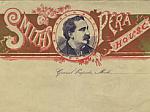
As the Opera House aged and burlesque became the standard fare the theater became known as "wicked old Smith's Opera House. Some considered its reputation redeemed when Mel Trotter turned it into a rescue mission.
Bibliography
Books available at the GR History and Special Collections, Grand Rapids Public Library
- Baxter, Albert. History of the City of Grand Rapids, Michigan. New York, Grand Rapids: Munsell & company, 1891.
- Belknap, Charles E. The Yesterdays of Grand Rapids. Grand Rapids: The Dean Hicks Co., 1922.
Books available at the GR Public Library
- The library has too many books pertaining to all aspects of opera to mention them individually.
Recordings available at the GR Public Library
- Many of the operas mentioned in the essay are available on CDs, DVDs or videos

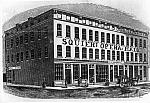
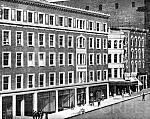


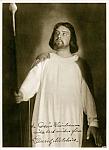
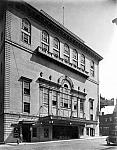
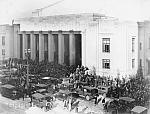
 facebook
facebook